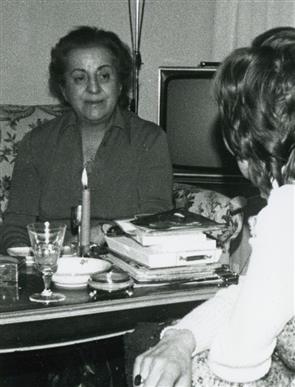


Alexandra de Hadeln - Balaceano (1911-1977)
Draft for a biographie (3)
1950-1955
In Florence life became organised. The apartment grew bigger as they changed status from sub tenant to tenant. To produce became a priority. Harry started to colour prints on a large scale and to do the cooking while Alexandra prepared the rolls of prints for sending to the US. Their work entailed regular trips to Paris, to visit engravers and printers, and find new subjects for reproduction. Once they went for an escapade to La Rochelle, an opportunity to paint several watercolours.
Having given up sculpting for lack of space but also because of the high cost of materials, Alexandra concentrated on painting. She painted in the sitting-room, with palette knife and brush, using a pair of binoculars the wrong way round to keep distance from her work so as to better judge it. The family, when present, is involved, the sitting room becoming a gathering place of improvised art critics. The beginning of the fifties were those of experimenting with new techniques. A second-hand lithograph press was installed in the flat but in the end hardly used.
Alexandra did other experiments, in particular with chemical transfer paper and explored the possibilities of spraying oil on slabs of unpolished glass. A few samples remain of the experiments, enriching in themselves- but the aim to reproduce art for commercial purposes finally failed due to in sufficient mastery of the technique. This cannot be said of an etching “The Tuileries Gardens”, from the same period and engraved in Paris on 3 copperplates for the colour, which had a sound commercial success.
After the apartment in Cannes of Alexandra’s mother had to be sold, Viareggio and its Pineta became favourite spots for short holidays. Harry developed a passion for fishing, discovering the Tuscan landscape up to the spring of the Arno. In this period Alexandra takes part in various local exhibitions and in 1955 participates in the international painting competition on the Arno where close to 200 amateur and professional artists have 1 day to paint a work with the river as subject. Her work had a special mention.
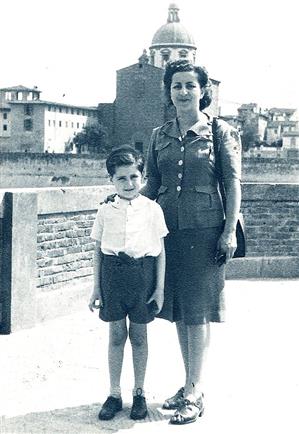
1957
Finally she holds an important exhibition at the “Galleria Spinetti” Florence, showing her pre-war sculpture and several paintings of Florence, Tuscany, rural scenes, horses and-a recent discovery- scenes from the Togni circus. The exhibition attracts the attention of critics, while disturbing them in its diversity.
The art critic of the newspaper “La Nazione” writes: Mrs. De Hadeln says “to find inspiration it’s enough to look around oneself” but no doubt the secret isn’t as simple or simplistic as the smiling artist would have us believe. One gets the feeling that the need for research increases from painting to painting, as though each time the brush refuses to continue on the familiar path. Hence, instead of talking about the usual “periods” we are tempted to talk about moments, flashes of a series of anguished states of mind”
The same year she participates with a few watercolours in the “Illa Rassegna del disegno contemporaneo”.
She also struggles on another front, her mother, sister and nephew are refugees in Nyon, Switzerland, needing her help after having lost everything. Then her son who, in his final school year has discovered Karl Marx- a class subject- appears to be leaning too much to the left.. and becomes a favourite conversation topic during meetings with friends.
Meanwhile, at the end of the fifties she toys with the idea of illustrating a book on Paris cafés. She makes use of her regular trips to paint several watercolours and oils of the “Flore”, the “Deux Magots”, “Procop”, “Café de la Régence”. The captions are to be written by her cousin Annie Caranfil, who for a while became a tourist guide after her husband in 1948 applied for political asylum in France. It was the time of existentialism and cafés and clubs were at the centre of an exciting life. The project unfortunately had to be abandoned for lack of money and a publisher.
1965-1968
Again Alexandra exhibits in Florence at the “Galleria Sante Croce” (1966). In the meantime she takes up sculpting again for the first time since the war. She makes a bust of her son holding a film camera, the latter having become a documentary filmmaker and about to get married. On 11 November 1966 she is at the forefront when the Arno floods the town. That night, watching the river rise mercilessly from her window she telephones the fire brigade to warn them – in vain - of the imminent disaster. They remain cut off for three days, the water having risen to more than 2 meters below the Guicciardini palace where they live. After the disaster, the army having put up floodlights to illuminate the water’s edge, it inspires a painting. Always this fascination with light, whether of a monument lit up at night, in a circus tent, or here, produced by a floodlight directed at the houses along the Lungarno.
Little by little life returns to normal. In September 1967 she takes part in a group exhibition the “Third Painting Biennale”, Loudon, before undertaking another big exhibition at the “Galerie du Zodiac”, Geneva in March 1968, where the circus is the main theme of paintings on show.
She launches into producing a series of humoristic watercolours, the subject being tramps on an idyllic beach. The captions are often inspired by her husband, making fun of contemporary Italian intellectuals - to the point of turning them into a parody that is later used as an introduction to an exhibition. In parallel she enters into a mythical world populated by centaurs, more or less drawn from a rather romanticised mythology. At a time that the Red Brigade are rife in Italy and Florence is covered in darkness at night through economising electricity, her message is that life is made of hope and on the contrry should be joyful.
In 1971 her mother Marguerite Balaceano dies at the Lignière, near Nyon after a long and eventful life, surrounded by her loved ones. Having renounced all her life to apply for a different nationality from her own, she never stopped dreaming of a hypothetical return to Romania and the time when petroleum money flowed, memories she wrote down in notebooks that survived her. Mother and daughter had the opportunity to reconcile their often stormy relationship shortly before her death.



1972 29 April
Tragedy hits brutally one night after a walk in town during a short stay in Nyon. Harry is suddenly seized by a horrible pain in his shoulder, taken to hospital in Nyon and dies less than 4 hours later. Totally shattered, Alexandra is on the point of losing her mind. She accuses the doctors of not having done the necessary to save him, even wants to start a case against them, in which her son refuses to collaborate, an attitude which results in creating a deep rift between mother and son which will divide them to the very end. Harry’s funeral is held in the Russian orthodox church in Geneva, where the couple married nearly 40 years earlier, and he is buried in the small cemetery of Genolier – close to where he dreamt of building a house one day.
According to an old Romanian custom, Harry is buried holding, amongst other things, his Lancia car key. Alexandra keeps repeating that her life is now in God’s hands and that he will decide when He will call her to Him”.
From the tragedy of this separation a new Alexandra is born, throwing herself heart and soul into painting and sculpting. It is the start of one of the most productive periods in her artist’s career, as though wanting to catch up on lost time.
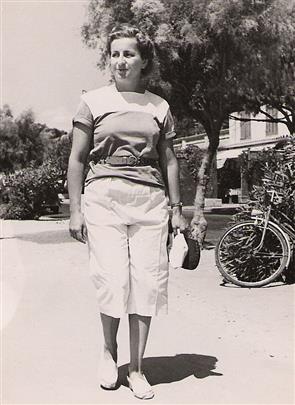
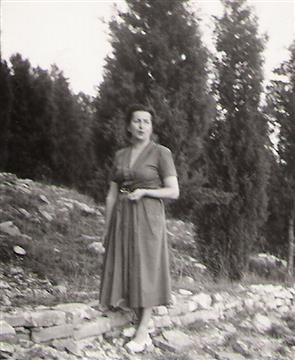
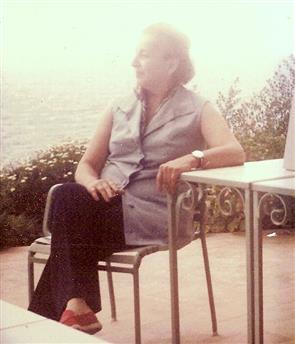
page 3 of 4
